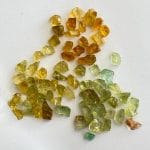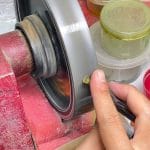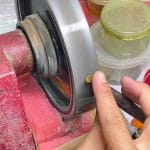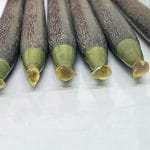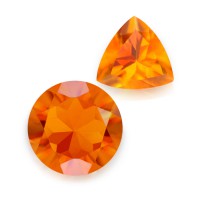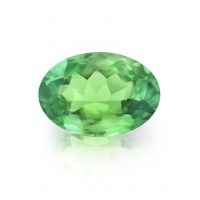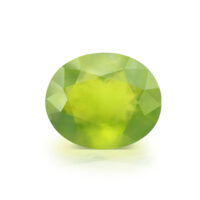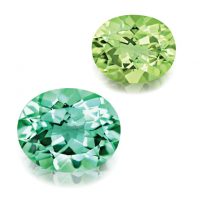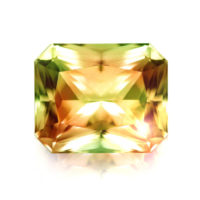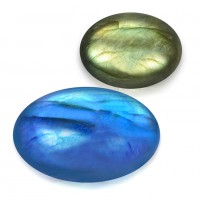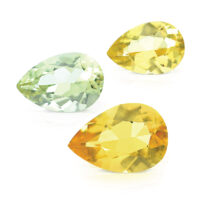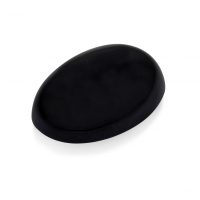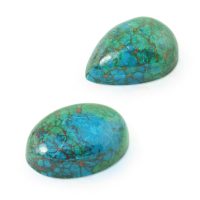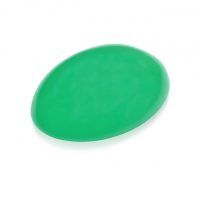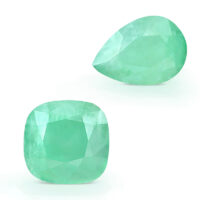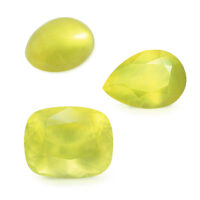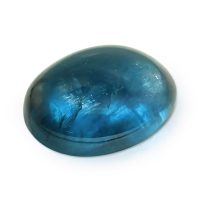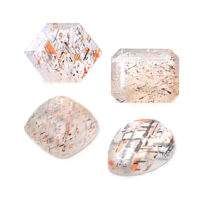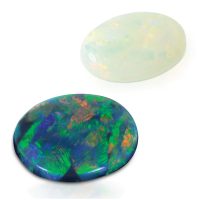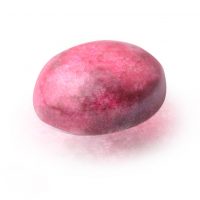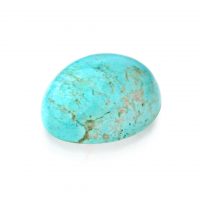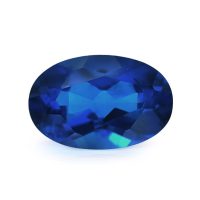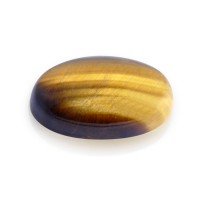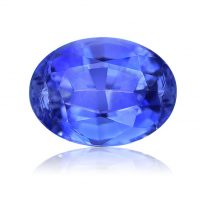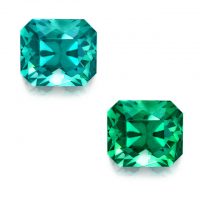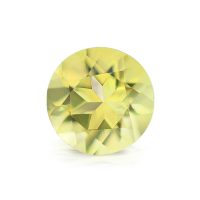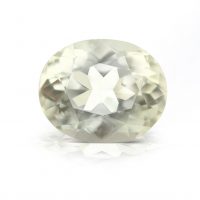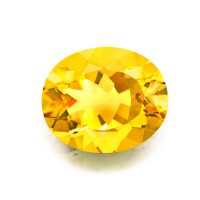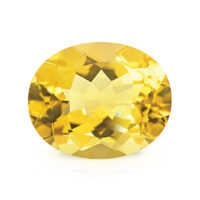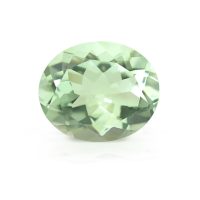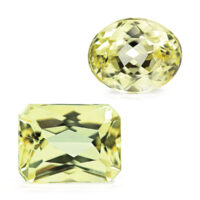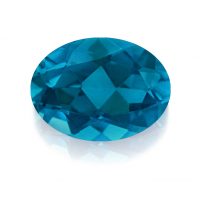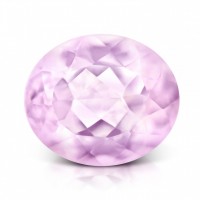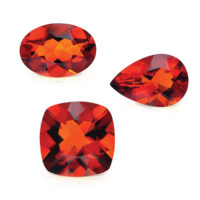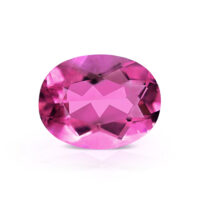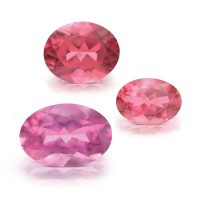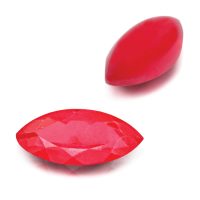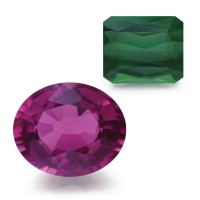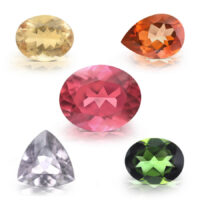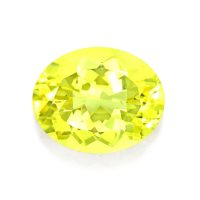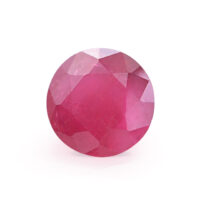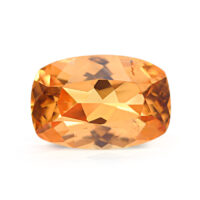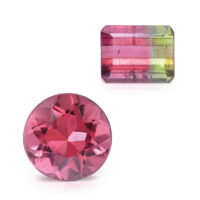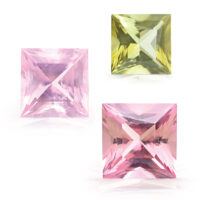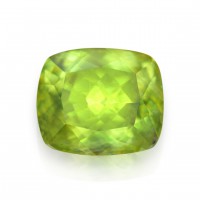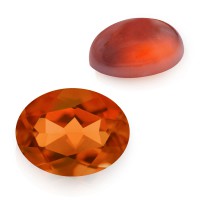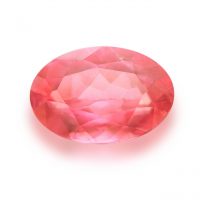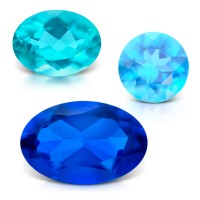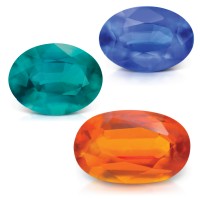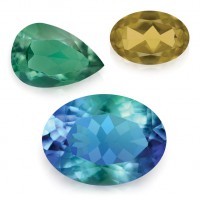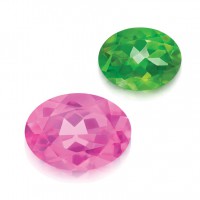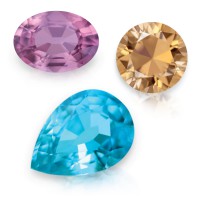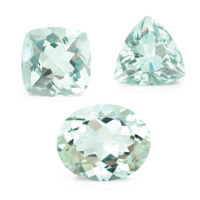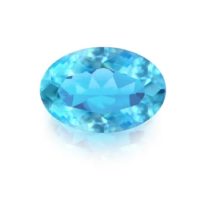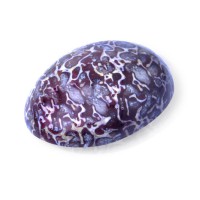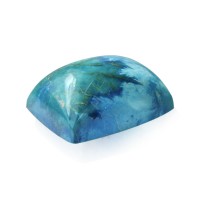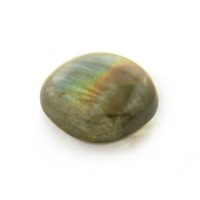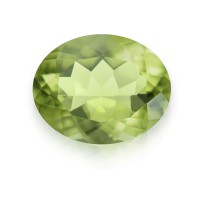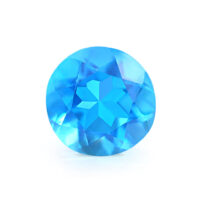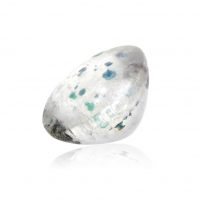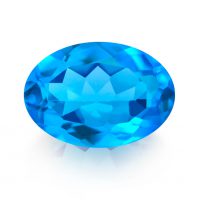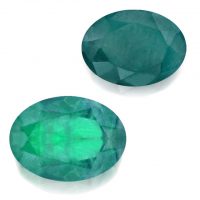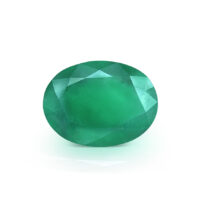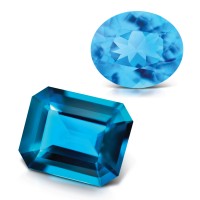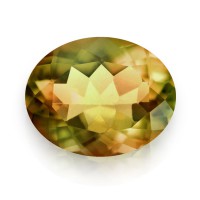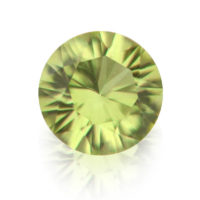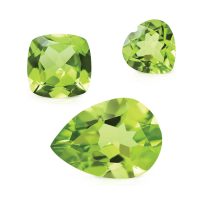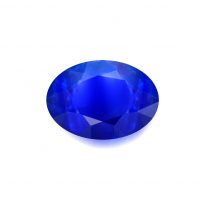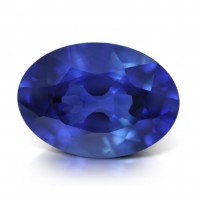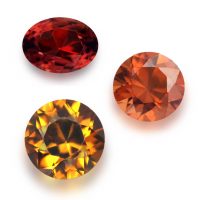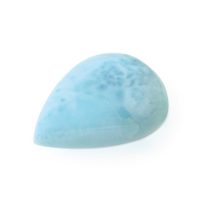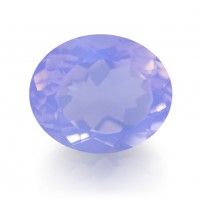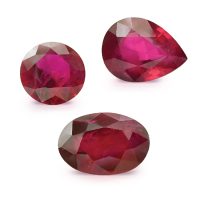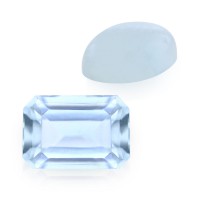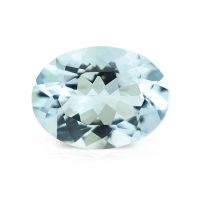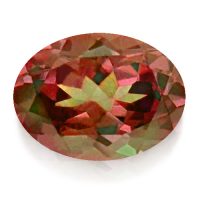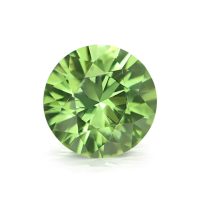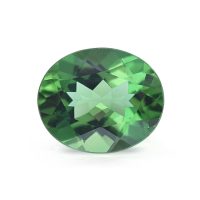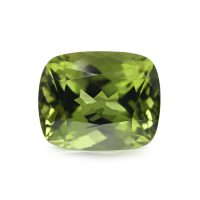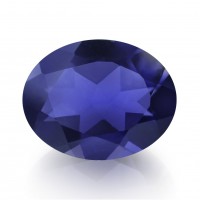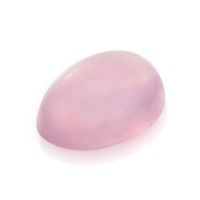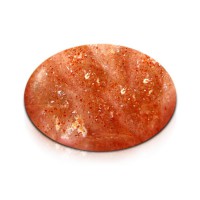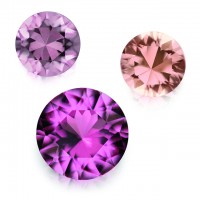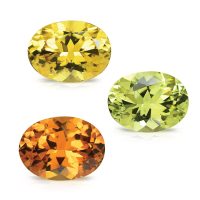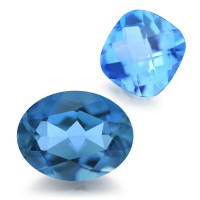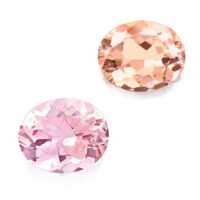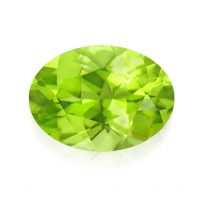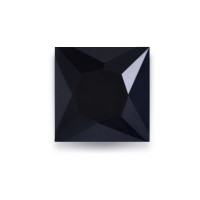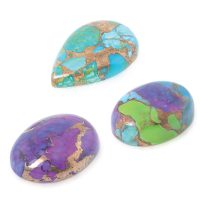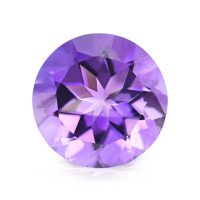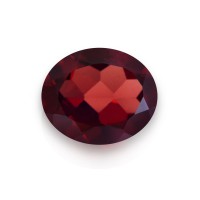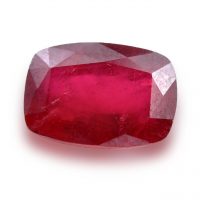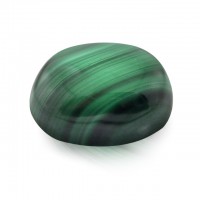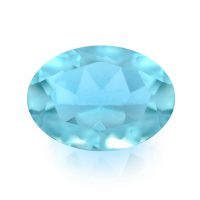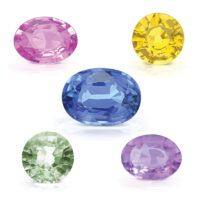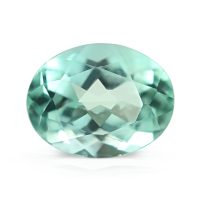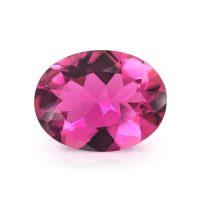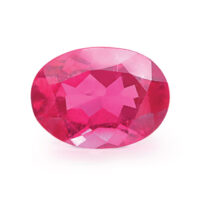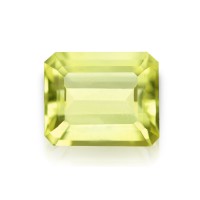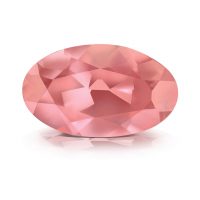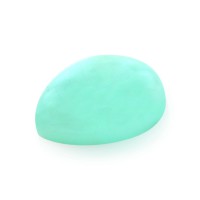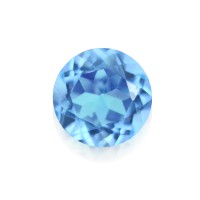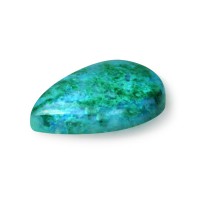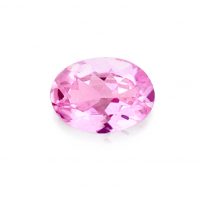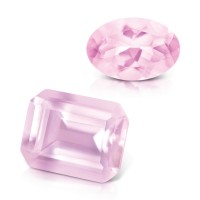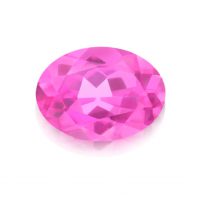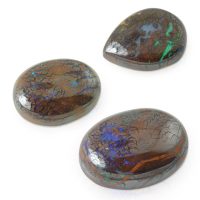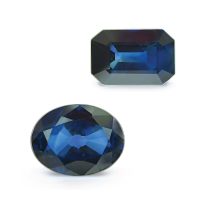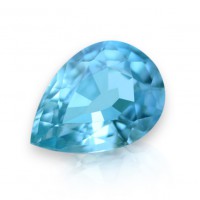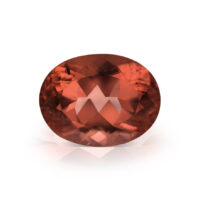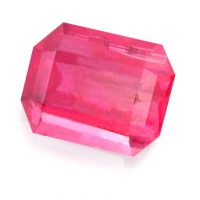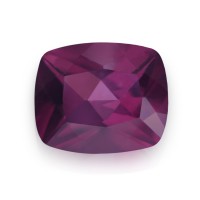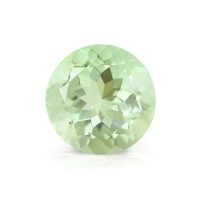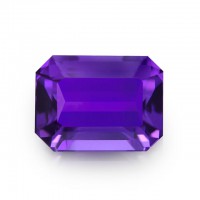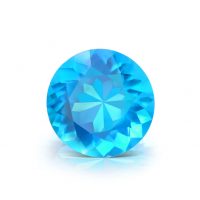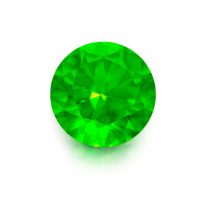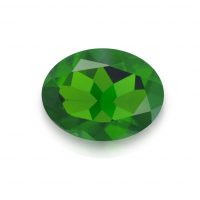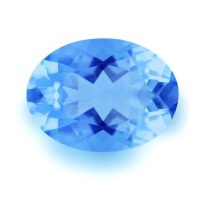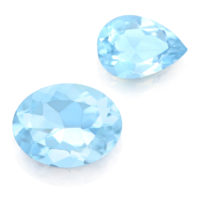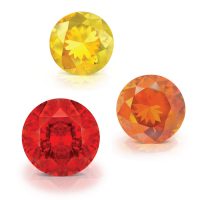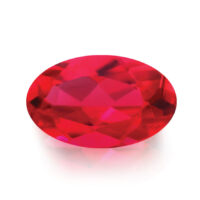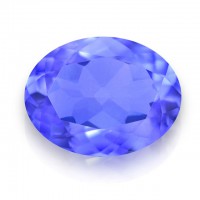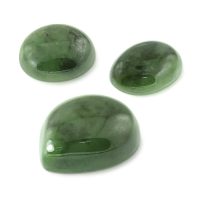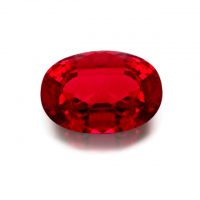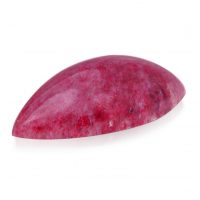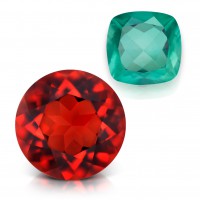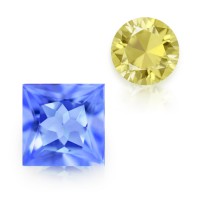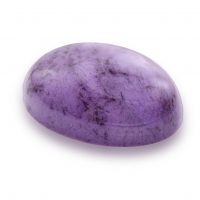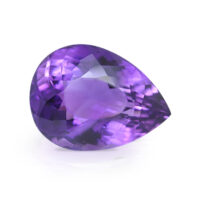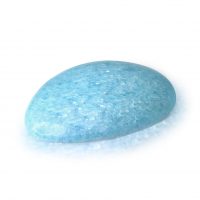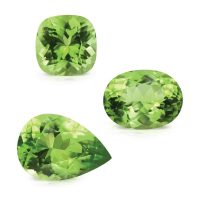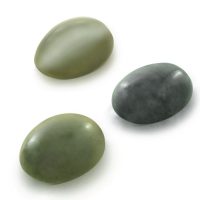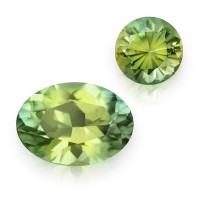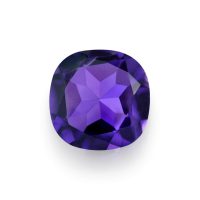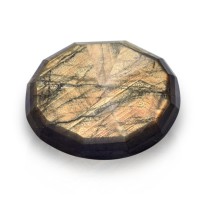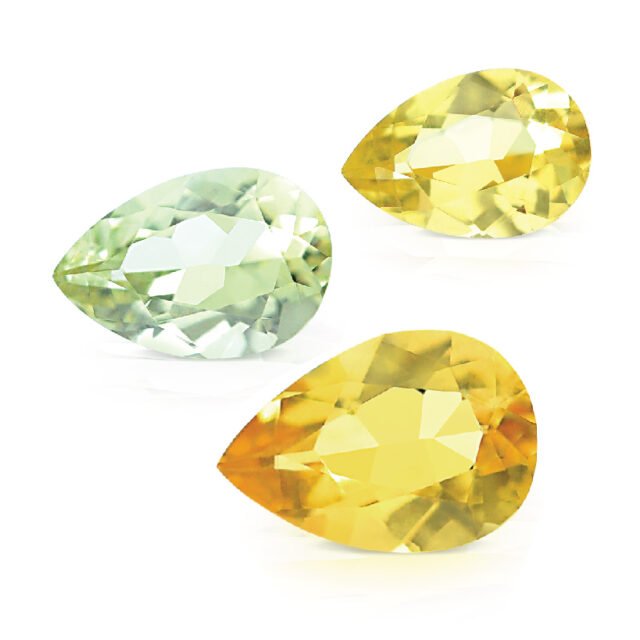

Australian Beryl are gorgeous golden, golden lime, and jungle lime gemstones from the historic Disputed Mine, located on the Northern Territory’s famous Mount Palmer in the Central Harts Range Fossicking Area. Hand fossicked over 20 years ago, Australian Beryl are delightful remnants of very old mining from a well-known ‘rock hound’ locale – you need to be very lucky to chance upon the Disputed Mine’s gemmy Australian Beryl! Totally natural, Australian Beryl’s beautifully brilliant hues, combine with their everyday wear-ability and extreme scarcity, making them perfect for jewelry aficionados who appreciate fine Antipodean gemstones.
Hardness 7.5 – 8
Refractive Index 1.562 – 1.602
Relative Density 2.66 – 2.87
Enhancement None
Beauty
Related to Aquamarine and Emerald, Australian Beryl displays stunning orangish-yellows, greenish-orangish-yellows, and yellowish-greens, with a highly-desirable medium to medium-light saturation (strength of color) and tone (lightness or darkness of color), the marketplace ideal. These gorgeous hues, combined with their high transparency, breathtaking brilliance, beautiful scintillation (play of light), attractive vitreous (glassy) luster, and everyday durability, make Australian Beryl ideal for gemstone jewelry.
Unlike Emeralds, Australian Beryl has a high clarity and transparency, requiring optimal lapidary to facilitate its inherent beauty. Optimally faceted in the legendary gemstone country of Thailand (Siam), home to some of the world’s best lapidaries, crystals carefully orientated to maximize colorful brilliance, maintaining an eye-clean clarity (the highest quality clarity grade for colored gemstones as determined by the world’s leading gemological laboratories), a high-polish/luster, and an attractive overall appearance (outline, profile, proportions, and shape).
Australian Beryl is a member of the Beryl mineral family (from the ancient Greek ‘beryllos’, meaning blue-green stone), commonly known as the ‘mother of gemstones’ because of its highly regarded gem varieties. While pure Beryl is colorless, it is an ‘other colored’ gemstone, meaning that trace amounts of elements such as chromium, iron, manganese, and vanadium are responsible for producing its diverse colors and many varieties. Beryl is an alluring and popular gem family, with many varieties distinguished by their color. Beryl’s impressive color diversity and important gemstone varieties deserve the consideration of any true colored gemstone collector. Few other minerals have so many colorful assortments and not surprisingly, Beryl includes some very important gemstones; Aquamarine blues, Emerald greens, Goshenite whites (colorless), Heliodor/Golden Beryl yellows, Morganite pinks, and Red Beryl reds. Australian Beryl’s hues are due to trace amounts of ferric iron. Golden Beryl is sometimes synonymous with Heliodor (‘gift from the sun’ from the Greek ‘helios’ sun and ‘doron’ gift), but correctly, Golden Beryl and Heliodor are differentiated by their color; Golden Beryl is a purer yellow or an orange-yellow, while Heliodor is greenish-yellow. Beryl is naturally transparent, but inclusions and impurities can make it opaque. While all gemmy transparent varieties are highly valued, with Aquamarine and Emerald most important and well-known, the opaque forms of Beryl are far more common. Beryl typically crystallizes in perfect, six-sided hexagons in pegmatites (a coarsely crystalline igneous rock with crystals several centimeters to several meters in length), and some of the largest natural crystals ever unearthed (up to 8 meters) are Beryl. On extremely rare occasions, Beryl’s that contains a fine silk can be cut ‘en cabochon’ (cut in convex form and highly polished, but not faceted) exhibiting both asterism, a star-shaped pattern of reflections, or chatoyancy, a ‘cat’s eye’ seen in reflected light. Aquamarine, Emerald and Golden Beryl are the most likely Beryl gemstones to exhibit these optical effects, noting they are usually weakly displayed. The most desirable Chatoyant Beryl gemstones possess a highly desirable color combined with a bright, thin eye that perfectly bisects the gem, but examples of this quality are a true rarity.
Rarity
While Brazil is the world’s main source of yellow-green Beryl, it is also found in Madagascar, Namibia, Nigeria, Russia and Ukraine, with fine examples commanding higher prices due to their comparative rarity. Incredibly scare, fine Australian Beryl is an unknown obscurity for most gemstone professionals.
Mineral Beryl occurs in over 300 locations throughout Australia, but it’s generally not gem-quality, with most mining limited to industrial beryllium. The New England area of New South Wales has unearthed the majority of Australian’s gem-quality Beryl (Aquamarine and Emerald), but notable, albeit limited, gemmy Beryl (Aquamarine, Emerald, Golden Beryl/Heliodor, Green Beryl, and Yellow-Green Beryl), also occurs in the Northern Territory, Queensland, South Australia, and Western Australia.
The Central Harts Range Fossicking Area south of the Atitjere Community also encompasses the abandoned mica mines of Mount Palmer. From 1890 until 1960, when mica mining ceased, almost all Australian mica came from the Northern Territory, with most extracted from the Harts Range. A unique part of both the Territory’s and Australia’s heritage, these former mining sites provided gemstone fossickers with extensive tailings to explore. Also known as mullock heaps, these residual leftovers from mining, may contain gemstones that were either ignored or missed.
Established in 1896, the Disputed Mine is an abandoned mica mine located on the eastern side of Mount Palmer, 945 meters above sea-level. Named for a litigated ownership dispute in the 1920s, the mine was the area’s last to close (1960), and has been claimed to be the world’s longest operational mica mine. Unfortunately, its ownership details are incomplete; like many mines in the Harts Ranges, little was recorded. Known locally as the ‘Queen of Mines’, the Disputed Mine is extremely popular not only for gem fossickers, but also tourists visiting the famous Mount Palmer, noting many writers have expressed awe at the view from the mine.
Roughly the size of an Olympic swimming pool, the mine’s glittering mica tailings are situated high on the side of the mountain. The tailings do not reveal their treasures to fossickers without a great deal of effort, as well a huge amount of luck! Gems are found by repeatedly hand digging through the mica tailings to the natural surface, working uphill until gravity takes over, which is incredibly time-consuming with low rewards. Small Beryl crystal fragments are found in the tailings, but the vast majority are specimen grade. Old mining from a well-known, designated fossicking area, you need to be very lucky to find the Disputed Mine’s gemmy Australian Beryl. Other gemstones present in the mica tailings include, Amethyst, Apatite, Garnet, Pink Feldspar, Rock Crystal, Rose Quartz, and Smokey Quartz.
Hand fossicked in the early 2000s, our Australian Beryl was collected over several years by a small, socially responsible, mine-to-market collective, with exceptional value and chain of custody afforded by vertical-integration. Extremely important in today’s gem and jewelry industry, nothing is lost to unnecessary middlemen, and provenance is assured. Most Australian Beryl crystals from the Disputed Mine are low quality, very small, dull and fractured, making them unsuitable for faceting. With approximately 90 percent weighing below one carat, Australian Beryl is incredibly scarce, and not readily available in jewelry. Australian Beryl is also one of the few gemstones that are totally natural and unenhanced, accentuating desirability, rarity and value.
Durability & Care
Australian Beryl (Mohs Hardness: 7.5 – 8) is an excellent choice for everyday jewelry. Always store Australian Beryl carefully to avoid scuffs and scratches. Clean with gentle soap and lukewarm water, scrubbing behind the gem with a very soft toothbrush as necessary. After cleaning, pat dry with a soft towel or chamois cloth.
Map Location
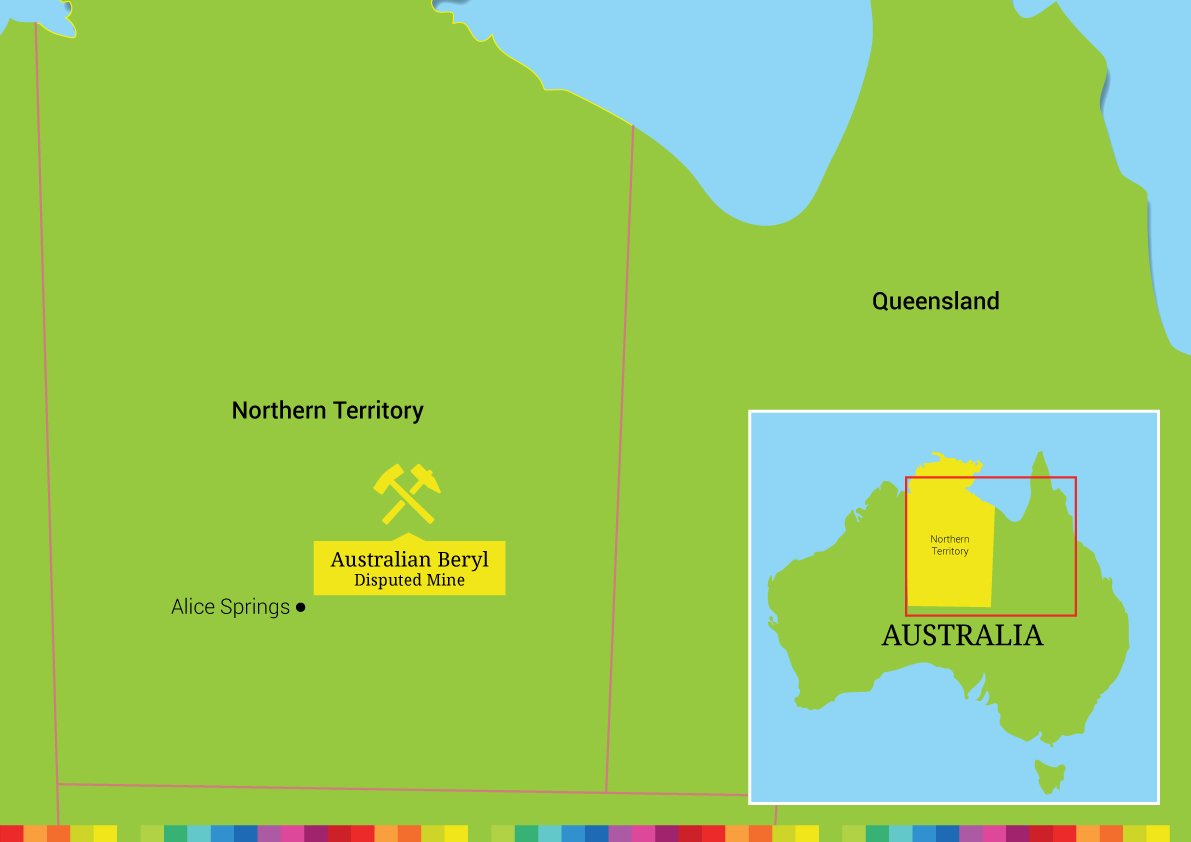
Click map to enlarge
